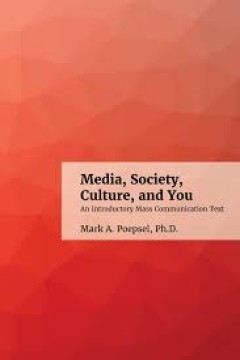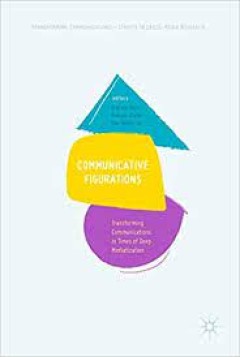Filter by

Trust Management IX 9th IFIP WG 11.11 International Conference, IFIPTM 2015,…
This book constitutes the refereed proceedings of the 9th IFIP WG 11.11 International Conference on Trust Management, IFIPTM 2015, held in Hamburg, Germany, in May 2015. The 10 revised full papers and 5 short papers presented were carefully reviewed and selected from 28 submissions. In addition, the book contains one invited paper and 5 papers from a special session on trusted cloud ecosystems.…
- Edition
- -
- ISBN/ISSN
- 978-3-319-18491-3
- Collation
- 53 illustrations in colour
- Series Title
- -
- Call Number
- -

Speaking Power to Truth Digital Discourse and the Public Intellectual
Casting doubt on the assertion that online discourse, with its proliferation of voices, will somehow yield collective wisdom, Speaking Power to Truth raises concerns that this wealth of digitally enabled commentary is, in fact, too often bereft of the hallmarks of intellectual discourse: an epistemological framework and the provision of evidence to substantiate claims. Instead, the pursuit of t…
- Edition
- -
- ISBN/ISSN
- 9781771990332.01
- Collation
- -
- Series Title
- -
- Call Number
- 216 pages

Media, Society, Culture and You : An Introductory Mass Communication Text
Interpersonal communication generally refers to the exchange of meaning between two or more people on a personal, often one-on-one, level. Interpersonal communication can be verbal or nonverbal. Most often, it happens in face-to-face settings. It differs from mass communication, which involves sharing meaning through symbolic messages to a wide audience from one source to many receivers…
- Edition
- -
- ISBN/ISSN
- -
- Collation
- -
- Series Title
- -
- Call Number
- 302 POE m

The Earliest Stages of Massive Clustered Star Formation: Fragmentation of Inf…
This thesis presents an in-depth, high-resolution observational study on the very beginning of the formation process: the fragmentation of dense molecular clouds known as infrared dark clouds (IRDCs). Using the Submillimeter Array (SMA) and Very Large Array (VLA) radio interferometers, the author has discovered a common picture of hierarchical fragmentation that challenges some of the leading t…
- Edition
- -
- ISBN/ISSN
- 978-3-662-44969-1
- Collation
- XX, 145
- Series Title
- Springer Theses
- Call Number
- -

Communicative Figurations : Transforming Communications in Times of Deep Medi…
This open access volume is about how to research the influence of our changing media environment. Today, there is not one single medium that is the driving force of change. With the spreading of various technical communication media such as mobile phone and internet platforms, we are confronted with a media manifold of deep mediatization. But how can we investigate its transformative capability…
- Edition
- -
- ISBN/ISSN
- -
- Collation
- -
- Series Title
- -
- Call Number
- 302 HEP c

Sexy Technical Communication
Sexy technical writing…we’ve got to be kidding, right? But no, we aren’t. Good technical writing is powerful and clear and gets the job done. It brings people together and solves problems. Good technical writing purrs and hums like that BMW you plan to be driving someday.What’s not sexy about that? On the other hand, poor technical writing skills may lead to a lifetime of asking people …
- Edition
- -
- ISBN/ISSN
- -
- Collation
- -
- Series Title
- -
- Call Number
- 302.2 POW s

Commercial Communication in the Digital Age : Information or Disinformation?
In today’s digital age, online and mobile advertising are of growing importance, with advertising no longer bound to the traditional media industry. Although the advertising industry still has broader access to the different measures and channels, users and consumers today have more possibilities to publish, get informed or communicate – to “co-create” –, and to reach a bigger audienc…
- Edition
- -
- ISBN/ISSN
- 978-3110416503
- Collation
- -
- Series Title
- -
- Call Number
- 384 COM

Field-effect Self-mixing Terahertz Detectors
A comprehensive device model considering both spatial distributions of the terahertz field and the field-effect self-mixing factor has been constructed for the first time in the thesis. The author has found that it is the strongly localized terahertz field induced in a small fraction of the gated electron channel that plays an important role in the high responsivity. An AlGaN/GaN-based high-ele…
- Edition
- -
- ISBN/ISSN
- 978-3-662-48681-8
- Collation
- 80 b/w illustrations, 4 illustrations in colour
- Series Title
- -
- Call Number
- -

Communication Beginnings : An Introductory Listening and Speaking Text for En…
This textbook is designed for beginning-intermediate English language learners. It is composed of 7 chapters, each of which covers specific speaking and listening learning objectives and includes dialogues, interviews, discussions and conversation activities. Each chapter includes listening and speaking components such as dialogues, interviews, discussions and conversation activities. Each chap…
- Edition
- -
- ISBN/ISSN
- -
- Collation
- -
- Series Title
- -
- Call Number
- 302.2 ABR c

Small Group Communication : Forming & Sustaining Teams
Small Group Communication: Forming & Sustaining Teams is an interdisciplinary textbook focused on communication in groups and teams. This textbook aims to provide students with theories, concepts, and skills they can put into practice to form and sustain successful groups across a variety of contexts.
- Edition
- -
- ISBN/ISSN
- -
- Collation
- -
- Series Title
- -
- Call Number
- 302 LIN s
 Computer Science, Information & General Works
Computer Science, Information & General Works  Philosophy & Psychology
Philosophy & Psychology  Religion
Religion  Social Sciences
Social Sciences  Language
Language  Pure Science
Pure Science  Applied Sciences
Applied Sciences  Art & Recreation
Art & Recreation  Literature
Literature  History & Geography
History & Geography